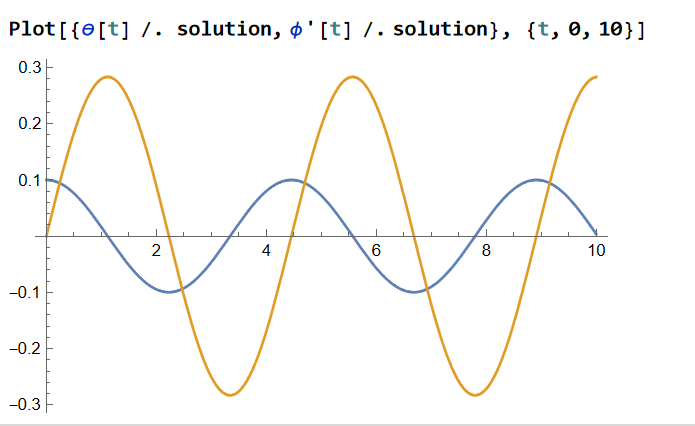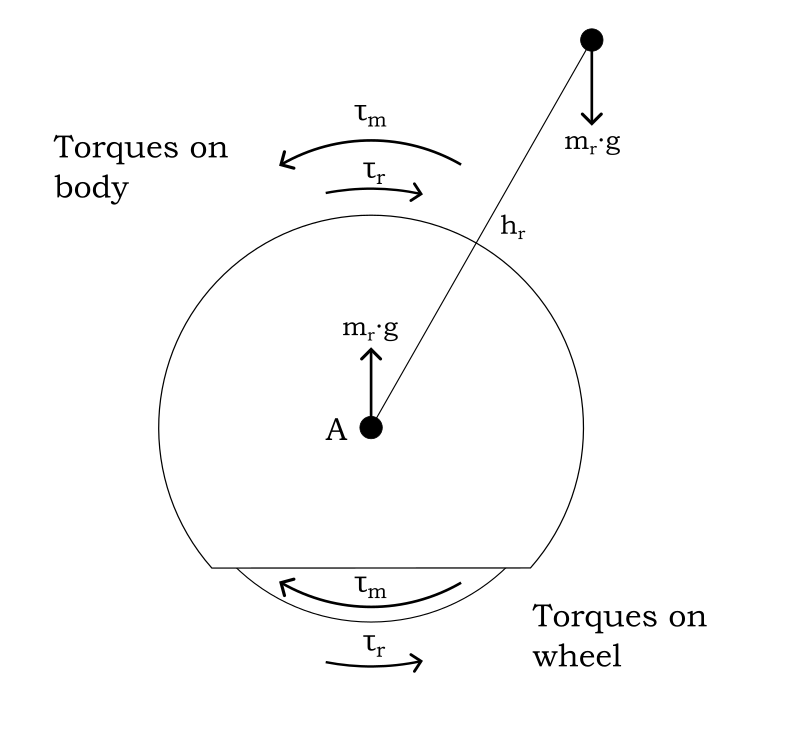I have heavily edited the question, as its previous standing was quite hopeless
Thinking about a simple model of a unicycle, where the rider is a uniformly distributed rod and the unicycle just consists of a wheel that is being powered by a motor; as shown in the below free body diagram:
Considering that the motor and the body (in this case this is just the rider modeled as the uniform rod) are rigidly connected, then the dynamics can be analysed to try and come to some useful conclusions.
I am trying to understand how the power of the motor can control the orientation of the rod, and so as a thought experiment I wanted to find the torque input that would cause the rod to stay statically upright for a given angle of $\psi$.
Because the motor and the body are rigidly connected the torque exerted by the motor onto the wheel is felt by the body in equal and opposite magnitude (N3L); and I am assuming both these torques to originate at the centre of the disk that is modeling the wheel and I am calling the torque exerted onto the wheel by the motor to be $\tau_m$.
Taking moments about the centre of the disk, the moments felt by the body should be $-\tau_m$ and $m \cdot g\cdot l\cdot sin\psi$, which would imply for the moments to cancel $$\tau_m=m \cdot g\cdot l\cdot sin\psi$$
$l$ is the distance from the centre of the disk to the centre of mass of the rod.
This seems plausible and would cause the acceleration of the wheel, however when I simulate it (where dynamics are derived using Euler Lagrange Equations and a numerical solver is used) I get counter intuitive results. As shown:
The blue line is the value of $\psi$ and the orange line is the value of $\phi$, which hasn't been included on the free body diagram but is the angle of the wheel.
In case someone would like to replicate the results, all parameters apart from g were set to 1 and g set to 10:
$$
L = \frac{1}{2} [m_w R^2 \phi ^2 + I_w \phi ^2 + m_b (l^2 \dot{\psi}^2 \sin ^2 \psi + [l \dot{\psi} \cos \psi + R \dot{\phi}]^2) + I_b \dot{\psi}^2] - g m_b l \cos \psi] \\
Q = \tau_m \frac{\partial}{\partial q} (\dot{\psi} - \dot{\phi}) \\
\tau_m \rightarrow m \cdot g\cdot l\cdot sin\psi
$$
So Why doesn't $\psi$ stay static when simulated; furthermore Would the torque created by the weight of the rider on the body have an equal and opposite reaction torque at the wheel? If this second statement is true then for a friction less system the value of torque stated should bring the system to a static equilibrium.


